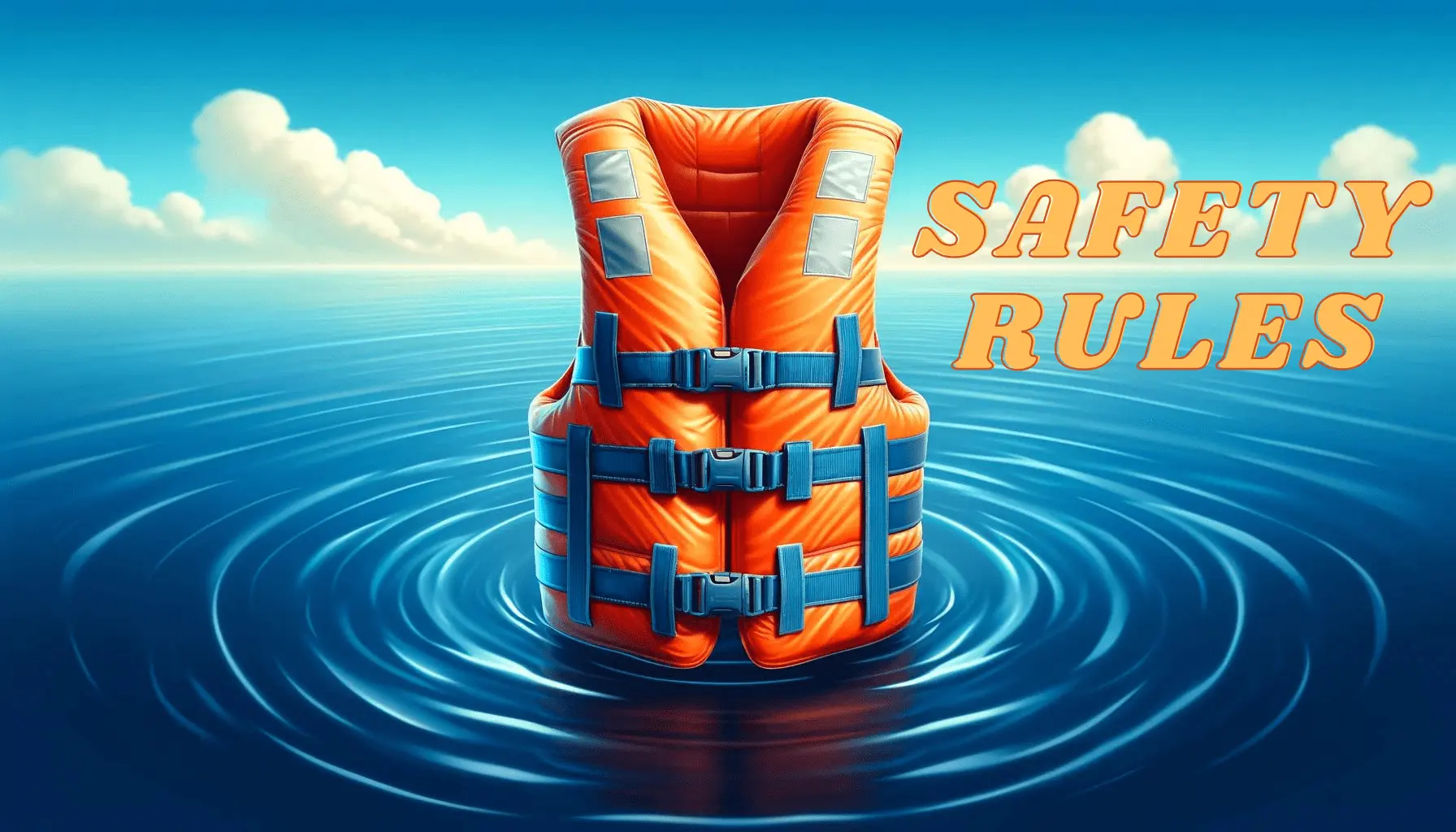In the quest for finding the perfect kayak, one question often surfaces with the persistence of a rolling wave: When it comes to long vs short kayak, which reigns supreme for your aquatic adventures? The conventional wisdom might suggest that longer is better, yet does this rule of thumb float in the diverse sea of kayaking needs? Whether you’re slicing through the water currents or bobbing along a serene lake, the benefits of long kayaks and the advantages of short kayaks manifest distinctively, directly affecting your voyage. Understanding the dynamics of choosing the right kayak length is essential, and delving into the nuances could reveal the best kayak length for different purposes—turning the tide in how you experience paddling.
Chart your course as we navigate the ebbs and flows of this discussion, shedding light on pivotal aspects that will guide you to your optimal personal flotilla.
Key Takeaways
- Gauging the long vs short kayak debate requires assessing personal needs and performance desires.
- Benefits of long kayaks include improved speed, storage, and long-distance touring capabilities.
- Short kayaks bring to the fore advantages such as increased stability, maneuverability, and beginner-friendliness.
- Choosing the right kayak length is not a one-size-fits-all decision and should be tailored to intended kayaking activities.
- Each kayak length offers specific attributes that cater to varying preferences and water conditions.
- Understanding the best kayak length for different purposes is crucial for a matching kayaking experience with your aspirations on the water.
Understanding Kayak Length and Performance
When embarking on a paddling adventure, the choice between a long and short kayak isn’t just a matter of size preference—it’s a fundamental decision that affects your experience on the water. Let’s dive into what distinguishes these two categories of kayaks and explore why the differences are critical to performance.
Defining Long and Short Kayaks
Long kayaks, measuring typically over 14 feet, are streamlined for speed and distance paddling, making them a top pick for sea kayaking or multi-day trips. Short kayaks, usually under 10 feet, prioritize maneuverability and ease of transport, thus being favorable for recreational paddling, fishing, and navigating whitewater.
Why Length Matters in Kayaking
Understanding the differences between long and short kayaks is key to optimizing your time on the water. Long kayaks surpass in terms of long kayak vs short kayak for speed, slicing through the water with less effort and sustaining higher velocities. However, short kayaks dominate when it comes to stability and agility—attributes crucial for beginners or those enjoying tighter waterways.
- Stability: Shorter kayaks offer reliable stability, which is reassuring for new paddlers and in calm, sheltered environments.
- Agility: With their compact form, short kayaks provide remarkable agility that comes in handy in rapid rivers or crowded spots.
- Speed: Long kayaks have an edge on open water where their length enables more efficient travel, cutting through the waves with grace.
- Storage: For those planning longer journeys, the ample storage provided by long kayaks is indisputable, making them equipped for adventure.
The performance capabilities of short and long kayaks cater to various preferences and activities, making the understanding of these differences crucial when selecting your vessel. Whether you’re speeding across a vast lake or zipping around a bend in the river, your kayak length will shape your adventure.
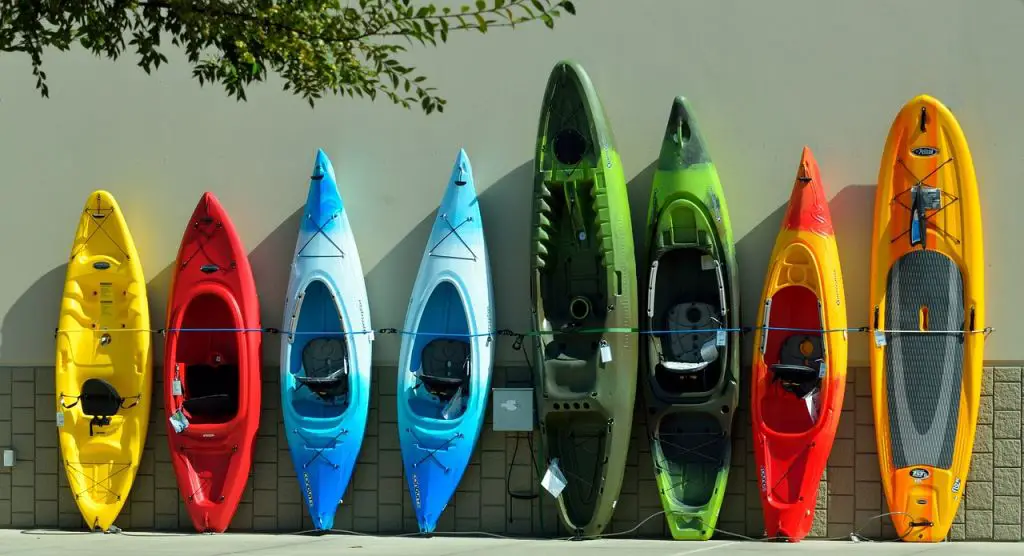
The Significance of Stability in Kayak Length
When considering the balance between stability and agility in kayaks, one can’t overlook how kayak length and stability are intertwined. Experienced and novice paddlers alike value the sense of security a stable kayak provides. As such, shorter kayaks for stability are often recommended to beginners looking for a safer and more accessible entry point into the world of kayaking.
Stability in Short Kayaks
The inherent design of short kayaks speaks volumes about their stability. Their modest length, coupled with a wider hull, creates a stout platform that rides higher on the water. This design minimizes the lateral movement that can lead to capsizing in adverse conditions. Moreover, newcomers to kayaking will appreciate the short kayak’s forgiving nature on flat water, where waves and turbulence are limited.
For someone just beginning to explore the sport, the comfort provided by a stable kayak can be the difference in making kayaking an enjoyable hobby rather than a daunting challenge. It’s this stability that allows paddlers to focus on honing their skills, such as stroke techniques and boat handling, rather than struggling to maintain their balance.
How Length Affects Kayak Stability
In contrast, kayak stability is not the forte of longer kayaks, which are typically narrower to accommodate the needs of speed and efficiency. As a result, they tend to be more sensitive to shifts in weight and require a more seasoned hand to navigate, especially in choppy waters. While longer models may have their place among the experienced who value performance over stability, they can pose a significant challenge for those still mastering the basics.
- The stability of a kayak is largely dictated by width and hull design more than the length alone.
- Short kayaks may sacrifice speed for enhanced stability, which is conducive to learning and short excursion activities.
- The choice between a short or long kayak should consider the paddler’s skill level and comfort with the vessel’s stability in various water conditions.
In the realm of kayaking, the length of the vessel casts a profound influence on one’s experience. Where the shorter kayaks for stability champion ease and safety, the longer counterparts take the lead on performance voyages, each playing its distinct role in the adventure that is kayaking.
Advantages of Long Kayaks
For enthusiasts and seasoned paddlers, the benefits of long kayaks extend far beyond their impressive physical presence on the water. These vessels are synonymous with performance and utility, offering a bevy of features that enhance the kayaking experience. Glide through open waters with grace and poise, as the long kayak advantages come to the forefront of aquatic adventure.

Speed and Efficiency on the Water
The design of long kayaks is not just about aesthetics; it’s about the intrinsic ability to cut through water with minimal resistance. The elongated shape lends itself to efficiency and speed in long kayaks, making each stroke count as you push forward with ease. Paddlers can relish the fluid motion and heightened momentum that these kayaks provide, ensuring that every excursion is as exhilarating as it is efficient.
Storage Capacity and Long-Distance Touring
One cannot discuss the storage capacity in kayaks without highlighting the ample space found within the confines of a long kayak. These vessels are equipped to handle the essentials needed for extended tours, from camping gear to provisions, all securely stowed away in accessible compartments. Whether you’re setting off on a multi-day journey or simply require extra space for your day-trip necessities, the storage solutions of a long kayak are second to none.
- Generous storage options for all your gear
- Secured compartments for safekeeping of valuables
- Designed for both day trips and multi-day expeditions
The superior storage capabilities, combined with the long kayak’s intrinsic swiftness, ensure that distance paddling not only becomes a feasible endeavor but also a profoundly enjoyable one. Paddlers can confidently embark on substantial treks, knowing their equipment is accommodated for, and their kayak is optimized for long-distance travel.
Advantages of Short Kayaks
When it comes to choosing the right kayak, the benefits of shorter models are particularly significant for those new to the sport and seeking beginner-friendly kayaks. The very nature of short kayaks presents key advantages that are appealing not just to novices, but also to enthusiasts looking for a playful and agile option for their water adventures. Below, we delve into what makes these compact vessels stand out.
- Enhanced Maneuability: Short kayaks are renowned for their exceptional kayak maneuverability, allowing paddlers to make quick and precise movements in the water. This agility makes them ideal for exploring intricate coastlines, navigating through tight turns in river rapids, or simply having fun with twists and spins on calm lakes.
- Stability for Beginners: Offering intrinsic stability, short kayaks give paddlers a feeling of safety and control, an essential aspect to encourage beginner-friendly experiences on the water. Their design minimizes the risk of capsizing, which is particularly reassuring for those just learning to paddle.
- Transportation and Storage: The compactness of short kayaks spells convenience in terms of transport and storage. They can fit comfortably atop most vehicles and are manageable to carry to and from the water’s edge, making them an advantageous choice for those with limited storage space or who prefer to kayak at various locations.
- Adaptability to Environments: The advantages of short kayaks extend to their suitability for varied aquatic environments. Whether it’s meandering through calm estuaries or facing the choppy waters of a bustling surf zone, short kayaks are up to the task with their adaptable characteristics.
Short kayaks cater to a delightful spectrum of paddling pastimes, apt for those who value versatility and a less technical kayaking experience.”
Moreover, the shorter length means these kayaks are not only easier for beginners to handle but also favored by experienced kayakers who appreciate the thrill of a nimbler vessel. The ease with which one can maneuver these kayaks is unmatched, propelling them to a preferred status among various levels of paddling enthusiasts.
In conclusion, the allure of short kayaks lies in their remarkable versatility and their capacity to deliver a gratifying and secure paddling journey. From the beginner embarking on their first waterborne adventure to the seasoned paddler seeking a playful and responsive craft, short kayaks offer something for everyone—making them a compelling choice in the world of watercraft.
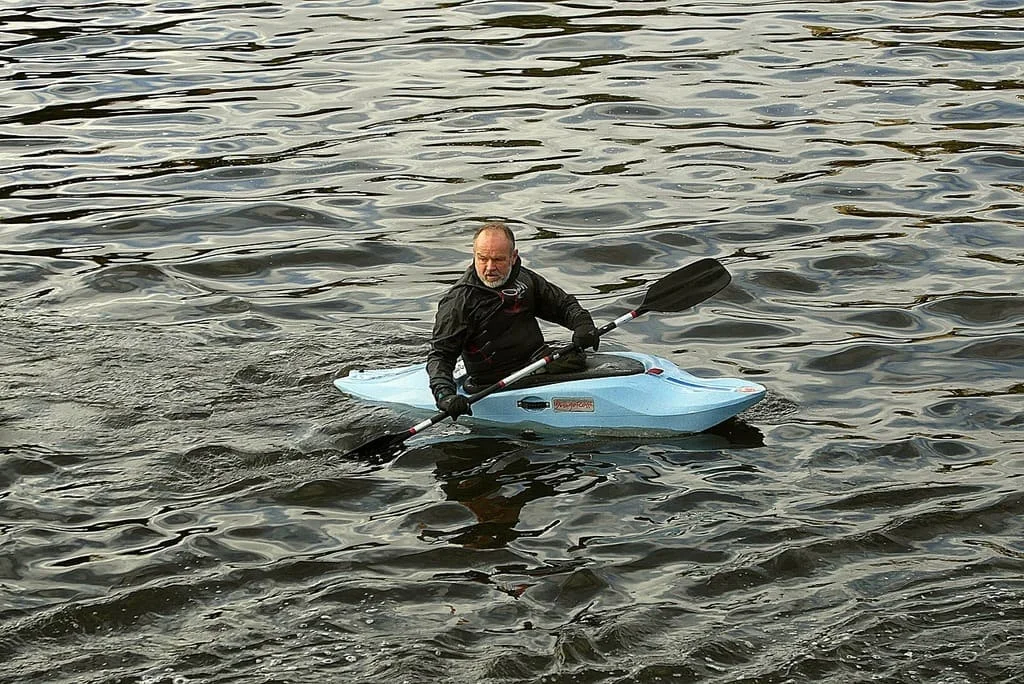
How Kayak Length Influences Maneuverability
The quest for maneuverability in kayaks often leads paddlers to assess the crucial role that kayak length plays in their ability to navigate waters deftly. It is no secret that choosing a maneuverable kayak is a priority for many enthusiasts, especially those planning to zigzag through challenging watercourses or simply enjoy the controlled and responsive feel in calmer waters. The pivotal factor here is shorter kayak agility, a characteristic allowing quicker turns and overall better command of the vessel.
What sets shorter kayaks apart is their decreased hull drag and an inclination for delayed linear motion, which contribute to their superior maneuverability. The ease with which a paddler can execute a sharp turn or suddenly change direction gives a distinct advantage in environments like winding rivers or amongst obstacles.
When faced with the narrow passageways of a meandering stream, the maneuverability of a shorter kayak becomes not just beneficial, but necessary for safe and enjoyable paddling.
This high degree of maneuverability instills a sense of confidence in kayakers, empowering them to take on more intricate routes with the certainty that their kayak will respond swiftly to directional changes—a testament to the agility inherent in shorter kayak designs.
- Understanding the relationship between kayak length and handling ability.
- Considering the types of kayaking activities that benefit most from improved maneuverability.
- Learning how to choose a kayak model that will meet the maneuverability needs for your desired kayaking experiences.
Whether you are a novice kayaker or an experienced one, recognizing the importance of maneuverability will greatly influence your performance on the water and overall enjoyment of the sport.
The Trade-Offs: Comparing Long and Short Kayak Performance
When venturing into the realm of kayaking, the decision between a long or short kayak significantly impacts the experience on the water. Understanding the trade-offs in performance that come with each length is key for paddlers aiming to match their craft to their ambitions and skill level. Both types have their unique advantages and challenges, drawing a line between kayak speed vs control and highlighting the role of drag in kayak design.
Examining Speed and Control
In the quest for high-speed kayaking, the longer hulls have a clear advantage. Thanks to their extended waterlines, long kayaks achieve greater speed and maintain forward momentum with more efficiency. However, it’s in the aspect of control where short kayaks play their best card, offering unrivaled maneuverability and agile responsiveness that’s invaluable in close quarters or rapidly changing conditions.
Analysing Drag and Water Displacement
The science behind kayak design reveals that drag plays a critical role in comparing long and short kayaks. Longer kayaks navigate through the water with less resistance, a crucial benefit for paddlers looking to cover distances with less physical strain. Short kayaks, encountering higher levels of drag relative to their size, prioritize water displacement over reducing resistance—this translates to enhanced handling capabilities and increased buoyancy.
Kayakers must weigh these factors relative to their intended activities. For serene lake explorations or tight river bends, a short kayak may provide the best experience. In contrast, open ocean adventurers and distance tourers may find the efficient glide of a long kayak aligns better with their longer, straighter journeys.
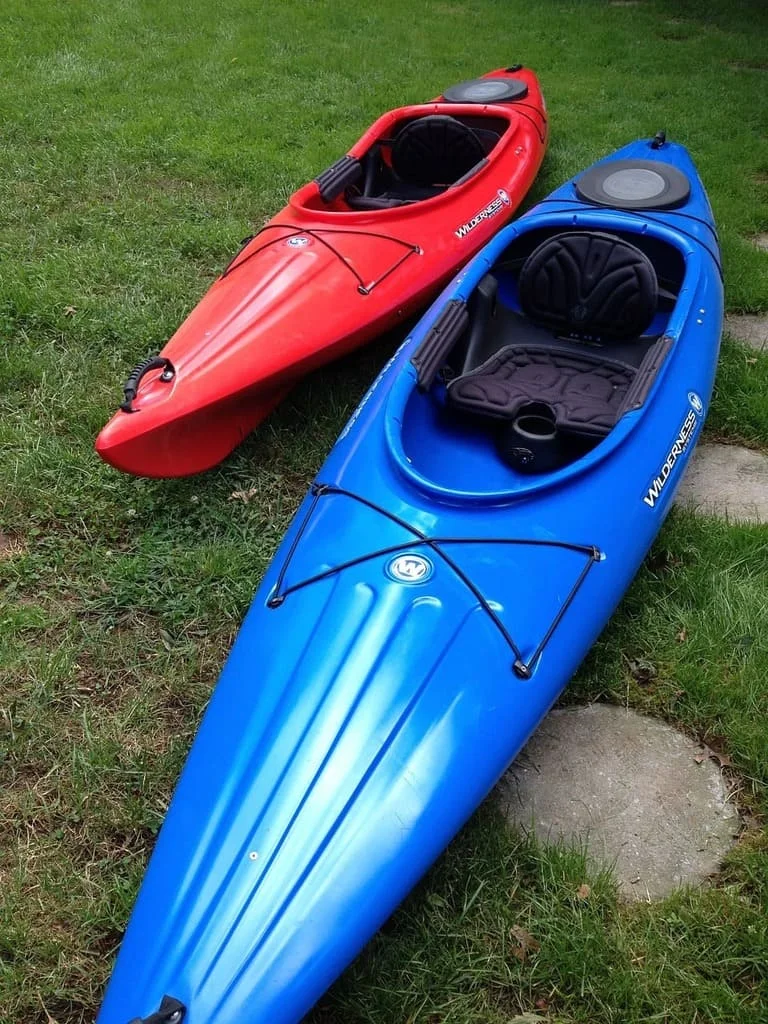
Choosing the Right Kayak Length for Different Activities
When venturing into the world of kayaking, understanding the best kayak length for different purposes is crucial for aligning your vessel with your intended aquatic endeavors. The dichotomy of long kayak vs short kayak for beginners is nuanced, with each serving a distinct realm of activities that can enhance or hinder your on-water experience. Below, we’ll delve into how to match kayak length with your preferred paddling pursuits.
Short Kayaks for Whitewater and Recreational Use
Short kayaks are celebrated for their dynamic adaptability to the robust currents of whitewater rapids and the casual ease of lake-bound leisure. Their nimble nature enables paddlers to effortlessly navigate turbulent waters and tightly-knit obstacles. For those just starting, the forgiving stability and quick turning capabilities afford a sense of confidence and safety. Here’s why short kayaks excel in certain scenarios:
- Enhanced stability makes them a top pick for beginners and casual kayakers.
- Superior maneuverability in closed quarters like narrow streams or rocky coastlines.
- Ideal for activities where quick directional changes are essential.
Long Kayaks for Sea and Distance Paddling
For the adventurer drawn to the allure of the open ocean or the long haul of a river trek, long kayaks for sea paddling offer an unmatched yet specific appeal. Designed for distance and efficiency, long kayaks track well in a straight line, cut through waves with grace, and offer ample storage for those journeys that take you far from the shore. Consider the strengths of long kayaks:
- Streamlined design promotes speed and reduces fatigue over large distances.
- Better tracking enhances the ability to maintain a course in choppy sea conditions.
- Vast storage space is invaluable for touring or camping expeditions.
Aligning the kayak length with your skills and the nature of waterways you’ll frequent, ensures a more pleasurable and purposeful paddling experience.
Long vs Short Kayak: Navigating Different Water Conditions
When it comes to kayak water conditions, not all vessels are created equal. The debate between a long kayak vs short kayak for water types is not just about size—it’s about practicality and how the kayak responds to the environment it’s in. The kayak performance in various water conditions can be drastically different, and understanding these nuances is crucial for any paddler seeking an optimal experience.
Long kayaks are often the preferred choice for those looking to cover large expanses of water, like those found in oceans and sizeable lakes. Their longer hulls offer superior tracking—meaning they maintain a straight path with less effort—and they generally perform better in windy or choppy conditions due to their increased speed and ability to cut through waves.
Advanced kayakers often favor long kayaks for the endurance and speed they provide, making them well-suited for challenges such as open-water crossings and multi-day trips.
In contrast, short kayaks thrive in waters where agility and stability are of the essence. Their compact size allows them to maneuver through tighter spots and are ideal for calm, flat waters, such as those found in small lakes, rivers, and creeks. This stability is not just reassuring for newer kayakers, but also for those who use their kayaks for activities like fishing, where sudden movements can become problematic.
- Long Kayak:
- Excels in open, rough waters
- Ideal for tracking and speed
- Better for long-distance excursions
- Short Kayak:
- Perfect for calm, flat waters
- Offers greater stability and maneuverability
- Preferable for recreational use and tight spots
Paddlers should consider the type of water they’ll be navigating most often before choosing their kayak. Whether it’s the extended journeys in vast waters or the playful paddles in serene settings, the kayak length plays a defining role in aligning with the paddler’s activities and skill level.
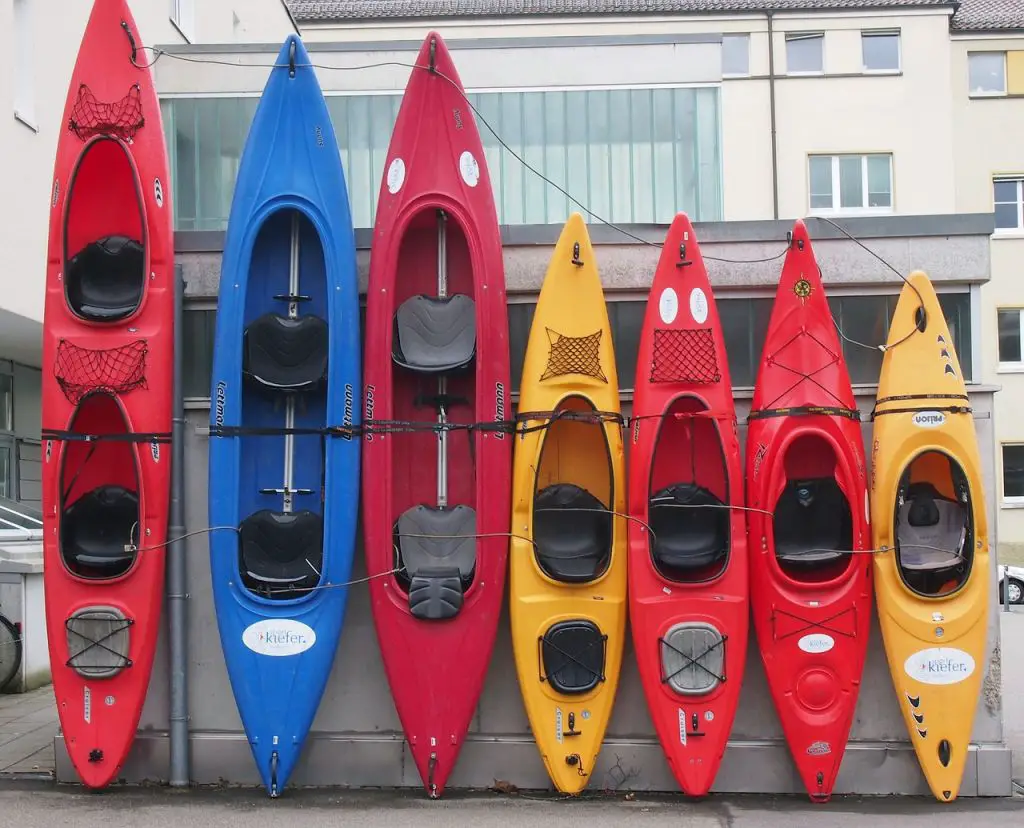
Design and Shape: The Hull’s Impact on Kayak Length
When assessing the parameters that define a kayak’s performance, kayak hull design stands out as a critical factor. Not only does it dictate the craft’s overall capabilities, but the impact of hull shape on kayak performance is profound, affecting stability, speed, and maneuverability. Exploring the intricacies of hull design reveals the astonishing adaptability and purpose-driven nature of each kayak model.
Hull Shape and Its Effect on Stability and Speed
The contour of a kayak’s hull plays a pivotal role in how it interacts with the water. Flat-bottom hulls are renowned for their excellent initial stability, imparting a reassuring steadiness during embarkation and calm voyaging. Conversely, V-shaped hulls transcend this by cutting through rougher waters with ease, their sharpened keels lending a superior secondary stability essential for challenging conditions. These design choices showcase the impact of hull shape on kayak performance, catering to the varied preferences of paddlers.
The Role of Rocker in Performance
Equally influential in a kayak’s dynamics is the kayak rocker, the curvature from bow to stern. High rocker hulls boast an enhanced ability to nimbly pivot and adjust course, an asset in capricious rivers and coastal explorations where directional changes are frequent. In contrast, a low rocker confers better speed and tracking, favoring those who aim to cover great distances in straight lines with unrivaled efficiency. This fine-tuning of the kayak rocker and performance ensures that every paddler can find a vessel tailored to their adventure style.
Long vs Short Kayak for Beginners: What’s Best?
Embarking on the journey of kayaking can be as exciting as it is daunting for beginners. A pivotal decision that impacts this experience is choosing a kayak for beginners, which involves the crucial debate: long kayak vs short kayak for beginners. The choice is not just about aesthetics or preference; it pivots on the foundational aspects of safety, stability, and ease of learning. With beginner-friendly kayaking at the forefront, short kayaks often emerge as the prudent choice for novices stepping into the water for the first time.
Short kayaks, with their compact frames and wider beams, are engineered to deliver a high degree of stability, allowing fresh paddlers to focus on developing their skills rather than contending with the kayak’s responsiveness to water dynamics. The stable platform of a short kayak makes it unlikely to overwhelm or intimidate new enthusiasts, which in turn encourages a more relaxed learning environment. Transitioning from learning basic strokes to advancing towards more complex paddling techniques is less cumbersome in kayaks that are forgiving and maneuverable.
On the flip side, while long kayaks offer increased speed and smoother tracking over distances, they demand a level of skill that beginners typically have not yet acquired. Such kayaks also tend to have a steep learning curve when it comes to control, particularly in unpredictable conditions. Consequently, when advising a novice on beginner-friendly kayaking, the shorter kayak is often advocated as the best starting platform. It ensures an enjoyable introduction to the sport while providing a more manageable approach to mastering the basics and building one’s confidence on the water.
FAQ
What are the primary differences between long and short kayaks?
Long kayaks tend to be faster, track better in straight lines and offer more storage, making them ideal for touring and long-distance paddles. Short kayaks are more maneuverable, stable, and easier to transport, suiting beginners, recreational activities, and navigating tight spaces.
How does kayak length affect stability and agility?
Kayak length directly impacts stability. Shorter kayaks typically offer increased initial stability, making them more forgiving for beginners and suitable for calm, flat waters. Long kayaks are less stable but have better secondary stability in rough conditions, requiring more skill to navigate.
Why might a longer kayak be a better choice for open-water paddling?
Longer kayaks are designed for better tracking and speed, making them suitable for open-water navigation. Their streamlined shape helps them cut through waves and maintain efficiency over long distances, which is crucial for ocean or large lake paddling.
Can short kayaks be good for fishing?
Yes, short kayaks are excellent for fishing due to their stability and maneuverability, allowing anglers to navigate tighter spots and remain steady while casting and reeling in fish.
How does the hull shape influence kayak performance?
The shape of the kayak’s hull affects its stability, speed, and maneuverability. V-shaped hulls, for example, offer better secondary stability in choppy conditions, while flatter hulls provide primary stability for calm waters. Rocker, or hull curvature, affects how easily a kayak turns, with more rocker aiding in maneuverability.
Which type of kayak is better for beginners?
Generally, short kayaks are better for beginners. They are more stable and easier to control, offering a more confidence-inspiring experience as new paddlers learn the basics of steering and balancing.
Are longer kayaks harder to store and transport?
Longer kayaks can be more challenging to store and transport due to their increased length. They may require more space for storage and a suitable roof rack or trailer for transportation.
For which activities are shorter kayaks preferred?
Shorter kayaks are preferred for activities such as whitewater rapids, recreational paddling, and navigating narrow inlets or rivers. Their agility and ease of management make them ideal for these scenarios.
How does water type influence the choice between a long or short kayak?
The choice between long or short kayaks can be influenced by the water type. Long kayaks perform better in open, rough waters due to their speed and tracking abilities. Short kayaks are more suitable for calm, flat waters or navigating through tight spaces because of their stability and maneuverability.
Is there a significant difference in speed between long and short kayaks?
Yes, there is a noticeable difference in speed. Due to their length and narrower shape, long kayaks can achieve and maintain higher speeds, making them faster than short kayaks, which are wider and designed for stability rather than pace.

